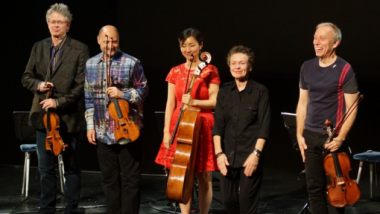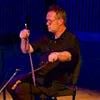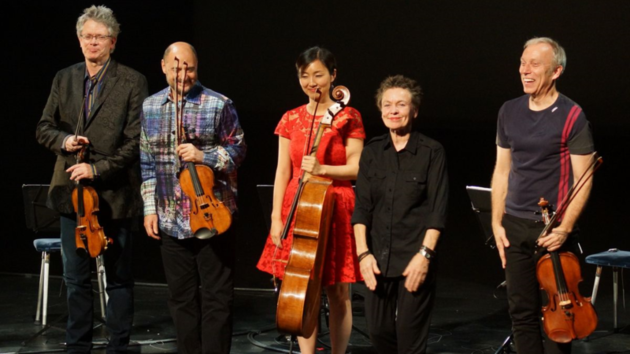
In a changing musical landscape, the string quartet is probably second only to the symphony orchestra as a symbol of the classical tradition as we’ve known it for the last few centuries. Both are trying to bring themselves into the present, in some cases through repertory renovation — which should not require special pleading, but often does — and in some cases by reconsidering the physical presentation of the music.
Obviously, when it comes to presentation, quartets have the easier job, not only because restaging orchestral concerts means finding different ways to use an already crowded space, and partly because the physical reconfiguration of an orchestra presents acoustical challenges that are harder to overcome than those a quartet would have to deal with. A number of quartets have been finding imaginative ways to stage their concerts, often in collaboration with the composers whose works they are playing.
The grandfathers of this approach are the Kronos Quartet, who, for the last 45 years have played new music almost exclusively, most of it commissioned by (or for) them and whose work over the past few decades has involved lighting and staging elements meant to involve listeners’ eyes as well as ears. But there are great-grandfathers as well. The Composers Quartet began plying those waters in the mid-1960s, and the Juilliard String Quartet, though revered for its interpretations of the standard canon, has always played and recorded new works. The Emerson and St. Lawrence quartets do a good deal of that too.
But the Kronos came to the task with its own brand of cool marketing savvy, which got it ink in the rock press and helped draw a broader audience than quartets were used to. Time was when that kind of thing was greeted with elevated suspicion in classical music circles, and there are still traditionalist listeners who retain their reflexive dislike of trendiness. But such thinking is a luxury that no longer makes sense. And the Kronos, for its part, has soldiered on, moving past the attention-grabbing stylishness of its early concerts, and sharpening its focus on a broad, polyglot repertory.
The group’s latest recordings focus on the work of two of New York’s most inventive composers — Michael Gordon and Laurie Anderson — each of whom has written a substantial score for the Kronos, commemorating a disaster that has befallen New York during this still-young century.
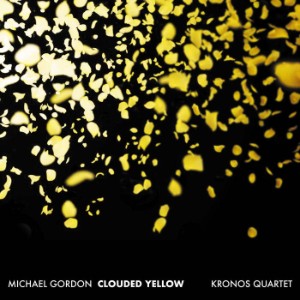
Michael Gordon’s Clouded Yellow (Cantaloupe), brings together a handful of works composed for the Kronos, and though it takes its name from the 2010 piece that opens the disc, its real centerpiece is The Sad Park (2006), a harrowing, four-movement recollection of the 9/11 attacks, built around recordings of kindergarteners, whose school was in the vicinity of the twin towers, describing what they saw — for example, “Two evil planes broke in little pieces and fire came” gives the first movement its title and text.
Gordon chose brief snippets from the children’s recordings, and has them repeat throughout the work’s movements. But if the technique calls to mind Steve Reich’s 1960s tape works, It’s Gonna Rain and Come Out, Gordon treats the clips quite differently. Where Reich synched different iterations of the same clip and allowing them to go out of phase, Gordon manipulates them with each playing, sometimes stretching words (without altering the pitches) and creating new emphases, sometimes using them as pure sound, broken into shards, and woven into the quartet texture, their words incomprehensible.
In fact, chilling as the children’s reminiscences are, their words are not what give this work its power; they are actually more effective when Gordon molds them into a quasi-instrumental howl, drenched in reverb, and offset by a soaring violin line that morphs into a siren, as in the opening movement, or distorted into a chordal rasp, like that of an old-fashioned modem handshake, amid anxious, minimalist chugging, as in the third movement. All this builds to a wildly painterly finale — fast, manic, and tense, with a steadily growing wail emerging from the chaos. Several composers have grappled with 9/11 over the last 17 years, but few have produced a work that captures the sense of upheaval, shock, and loss as vividly as Gordon’s.
The companion works are nearly as haunting. Potassium (2000) and Clouded Yellow (2010) share a fascination with glissandi, or sliding along the strings, an effect that, in its slow, low-lying form (as it is at the start of Potassium) evokes whale song, and when played faster, and in the upper range (as in parts of Clouded Yellow), sounds like the tape loop of sped-up laughter that the Beatles used in “Tomorrow Never Knows.” In both cases, the technique helps create a sense of mystery that Gordon’s music intensifies, mainly through dark ostinato figures, a bit of electronic processing and, in Potassium, some spare, slightly ominous percussion punctuation, and an ear-catching section in which a melody etched in Shostakovich-like melancholy is melded with a minimalist chordal accompaniment.
In context, the disc’s final work, Exalted (2010), a setting of part of the Kaddish, the Jewish prayer for the dead, which brings together the Kronos and the Young People’s Chorus of New York, seems almost a coda to Sad Park, although it was written years later, shortly after the death of the composer’s father. Tense and driven, the piece is first a descending chromatic setting of the text (“May His great name be exalted and sanctified,” sung in the original Aramaic), with a rhythmically hard-driven chordal quartet accompaniment. Over the course of its nine-minute length, it morphs into a calmer, more lightly accompanied section in which the choir breaks the text into single syllables, before coalescing again into a slow, reflective, dissonant version of the opening descending line — an uneasy kind of acceptance, perhaps.
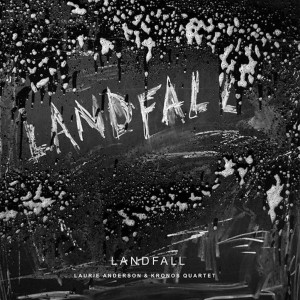
The other Kronos disc, Landfall (Nonesuch), is a collaboration with Laurie Anderson, a kindred spirit with the Kronos who, because she generally writes mostly for herself and her own ensemble, had never before written the quartet a full-length work.
On the surface, Landfall is Anderson’s memoir of living through Superstorm Sandy, which hit New York City in October 2012 and caused flooding damage in lower Manhattan, where Anderson lives, that has still not been entirely repaired. But Landfall is also an experiment in music’s mutability, or how meaning, in music, can have less to do with the composer’s thoughts while writing it than with the titles affixed afterward. A work that is packed with melancholy, neo-Romantic string writing, countered by desperate scampering and slippery glissandos as well as electronic sound (mostly keyboard and percussion loops), and with movement titles like “CNN Predicts a Monster Storm,” “The Electricity Goes Out and We Move to a Hotel,” and “The Wind Lifted the Boats and Left Them on the Highway,” can only be about a natural disaster, right?
Well, sort of. Actually, much of Landfall was completed long before Sandy: indeed, the Kronos played its premiere in February 2013 — eight months before the storm — at the University of Maryland. At the time, it was called Scenes From My New Novel. Thereafter, Anderson reconfigured it, and added a couple of texts that speak directly about the storm and its aftermath, including the finale, “Everything is Floating,” in which she slowly and coolly describes the wrenching scene she found when she returned home and looked in on her basement archives to see “All the things I had carefully saved all my life becoming nothing but junk.”
Collaborating with the Kronos seems to have been a good thing for Anderson, in purely musical terms. Most of Anderson’s works rely on long narratives in which fact and fantasy are seamlessly blended, with Anderson’s irony-rich narration holding the spotlight and the music usually a subservient, if sometimes illustrative, backdrop. Landfall puts the focus almost entirely on the music: 24 of its 30 short movements are purely instrumental and there is plenty of tone painting, including a mixture of dancing string lines and backward electronic sound in “The Water Rises,” and intense rhythmic interplay over grinding electronic noise in “The Wind Lifted the Boats and Left Them on the Highway.”
Far be it from me to recommend that Anderson change her style. It works for her, and it has evolved over the years, and many of the works it has yielded are magnificent and durable (even if the props, costumes and paperwork for her productions ended up in her basement, “floating here in the shiny dark water, dissolving.” But Landfall is a different kind of work, and it turns out to be her most moving score to date.
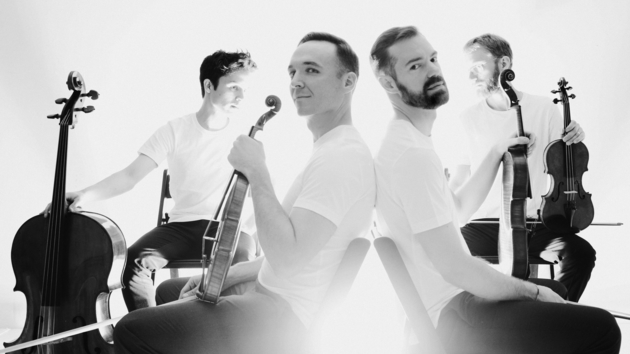
The JACK Quartet and Brooklyn Rider (founded in 2005 and 2008, respectively), groups that are spiritual descendants of the Kronos — to the extent that they play new music almost exclusively and think carefully about the visual aspect of performance — have released discs in recent months as well.
The JACK Quartet’s project is Everything That Rises (Cold Blue Music), an hour-long quartet by the Alaskan composer John Luther Adams, commissioned for JACK by SFJAZZ and completed in 2017. As Adams explains in his notes, the work is in just intonation, rather than the equal-tempered scale most Western listeners are used to, and its pitches are derived from the harmonics of its fundamental tone, C0 (that is, four octaves below middle C on the piano). That may seem arcane, but using overtones, and avoiding the compromises of tempering, gives the piece an unusual sound — slightly out of tune, perhaps, but also strangely comfortable and natural.
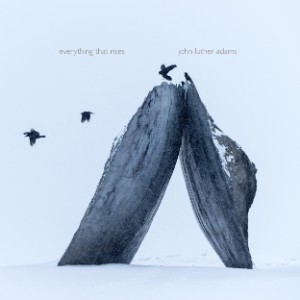
Adams begins the piece with a low, undulating drone, above which the players are meant to play as if they were soloists, each climbing up the overtone series at a different pace (the viola and cello move quite slowly; the violins faster), with each ascent going a bit higher. As the work unfolds, the relationships between the individual lines change, essentially growing more dissonant, since the intervals between overtones are smaller as you move higher in the series. All told, the work has an eerie, hypnotic effect, rather like watching the sparks from a campfire rising, at different speeds, within the smoke.
Brooklyn Rider’s Spontaneous Symbols (In a Circle Records) brings together works by five composers who work in distinct but compatible post-minimalist styles. Tyondai Braxton’s vital, rhythmically sharp-edged ArpRec1 (2015) is essentially a notated, acoustic-instrument version of a piece Braxton created electronically, though there are few hints of its computer origins. The first of the two consonant movements is built of short tones that quickly blossom into a thicker texture, rich in rhythmic counterpoint; the faster and more immediately exciting second movement highlights the quartet as an efficient machine.
Colin Jacobsen, one of the quartet’s violinists, contributed BTT (2015), a work he intended as a tribute to the Downtown New York art-rock scene of the 1970s, his inspiration ranging from Glenn Branca and Meredith Monk to the Velvet Underground and the New York Dolls. That, at least, is what he tells us in his program note: You’d be hard pressed to find much in the way of direct quotation from any of the musicians he cited, and his language, freewheelingly eclectic though it is (at one point, a modal, folk-like tune takes on an almost Dvořák -like accent, then gives way to textures that call to mind Vaughan Williams before returning to the folkish theme) rarely edges in the direction of 1970s punk or avant-gardism.
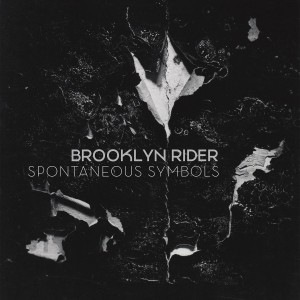
Along the way, it seems, Jacobsen got to thinking about John Cage, as the fountainhead from which the 1970s Downtown scene flowed forth, and thinking about Cage got him thinking about Bach. So he built his principal theme by using the letters of Bach’s and Cage’s names (B-flat, A, C, B and C, A, G, E) — a combination that is mildly angular, and pregnant with possibilities. You quickly forget about the vaunted 1970s idea, and follow Jacobsen’s development of his theme, which touches on a rich array of timbres and techniques in a series of adventures that coalesce into a compelling 20-minute piece.
Evan Ziporyn’s Qi (2013) — the title is taken from the Chinese character meaning “life” — is a three-movement amalgam of Eastern and Western imagery. The cultural interplay begins in the first movement, where a fast, swirling violin line takes on the character of an Asian reed instrument, and dances through the heavily rhythmic movement. In “Garden,” bird calls and vaguely pentatonic themes hint at an Asian-influenced naturalism, within an otherwise thoroughly Western harmonic cloak. And in the finale, “Transport,” Ziporyn gives the quartet lively, propulsive writing, chunky chordal passages and loping rhythms, and, in a brief respite from all that, a gracefully unfolding viola melody, all of which wrest the piece back toward a gritty urbanity.
Paula Matthusen’s on the attraction for felicitous amplitude (2015), for quartet and live electronics (supplied by the composer) begins with the sound of water dripping, a recording from a 2nd-century Roman cistern beneath a concert space at the American Academy in Rome. Matthusen captures the cistern’s mysterious atmosphere, and a sense of its long, shrouded history, in a slowly unfolding, mournful score, built of chromatic melodies with bent tones that give them an almost vocal sound. The theme is passed between the instruments, and set against a pianissimo, high-lying, repeating violin figure, as well as an indistinct, reverberant haze. It’s one of those pieces that ends too soon — you almost expect a second movement in which the secrets of the setting will be revealed, even though you know that, by definition, that’s not going to happen (and would probably seem glib and predictable if it did).
Kyle Sanna’s Sequence for Minor White (2012), which closes the disc, is a tribute to White, an early 20th-century American photographer. It has much in common with Jacobsen’s piece, not least a boundary-free eclecticism. Over the course of its 20 minutes, Sanna’s meditation on White and his work makes its way from mildly dissonant, slightly melancholic, reflective passages, through brief dialogues and dramas that unfold through either nervous rhythms or minimalist chordal repetition, eerie harmonics, or folk-tinged melodies over pizzicato accompaniments, solo, arpeggiated fiddling, or a galloping ensemble rhythm supporting a single, pianissimo, violin tone.
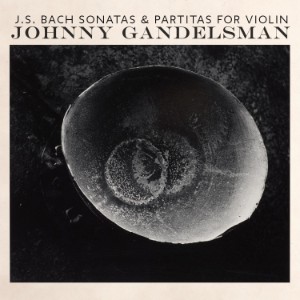
While we’re visiting Brooklyn Rider, I should note a compelling traversal of Bach’s Sonatas and Partitas for solo violin by Johnny Gandelsman, one of the quartet’s violinists (also on In a Circle Records, which Gandelsman runs). Gandelsman adheres to ideas about timbre and articulation that owe something to the early music movement, but interpretively, he takes an expressive approach undoubtedly grounded in the sensibility of a musician who spends much of his time performing new music. There is, for one thing, a real-life grittiness in his phrasing that seems driven by the conviction that these pieces are by a living, present composer, not an emissary from three centuries ago. But there is also, in these performances, an acutely drawn clarification of the music’s structure, as well as no reluctance to make a slow movement sing, or to make the most of the daredevil challenges of the Gigues and Presto movements in each suite.

